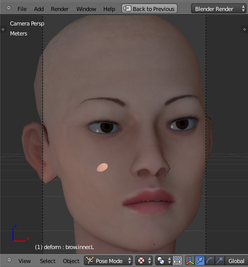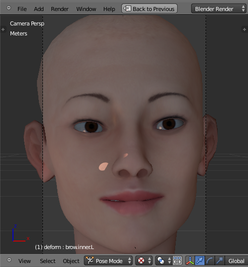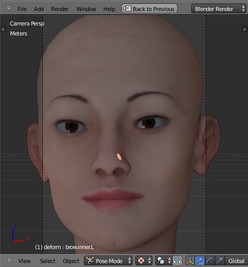OpenCog Docker library
This repository contains various docker images for demoing and using various parts of the OpenCog project. Using the docker images here is the easiest way to get interesting parts of OpenCog running.
By using Docker, most of the difficulty of installing and configuring
the large variety of required packages and dependencies is eliminated.
The individual docker files specify exactly what is needed to run a
system or demo. Using these is as simple as saying ./build.sh and
then ./run.sh.
The most sophisticated demo is Eva, an animated female head, capable of seeing you (via a webcam), talking to you (via a chatbot), and engaging you (and your guests) in social interaction. She will make eye contact, and express her pleasure with smiles and looks of surprise and happiness.
Another particularly interesting container is that for the OpenCog to MineCraft bridge, which allows OpenCog to operate an avatar running around in the MineCraft world.
Dockerfiles for Robot Operating System (ROS)
Dockerfiles for demoing and working with various different robot heads and bodies, mostly those from Hanson Robotics. Several of the heads are modeled with blender, and so can be usefully worked with and controlled even without a physical robot.
These files are contained in the hydro and indigo
directories. Eva comes in two forms: a basic animation and social
interaction demo, in the indigo/eva-owyl folder,
and a full-featured system (under heavy development, and probably broken)
in the indigo/eva-opencog folder. See the
README's in those directories for more info.
Dockerfiles for OpenCog
Opencog system dockerfiles can be found in the opencog and buildbot directories. See opencog's README.MD and buildbot's README.md.
The Dockerfiles in the directories opencog/tools/distcc,
opencog/embodiment and opencog/cogserver are not detailed because
they are not in active use.
Docker image structure:
├─opencog/opencog-deps:utopic
├─opencog/opencog-deps:latest
├─buildbot_* (Where * = atomspace, cogutil, opencog, moses)
├─opencog/cogutil:latest
├─opencog/opencog-dev:cli (for a dev environment)
├─opencog/opencog-dev:ide
├─opencog/moses
├─opencog/relex
Organizational Notes:
-
opencog/opencog-deps:utopic: ubuntu 14.10 based image with all OpenCog's dependencies installed. -
opencog/opencog-deps:latest: ubuntu 14.04 based image with all OpenCog's dependencies installed. This forms the base of opencog/cogutil. It likely will be updated to the latest LTS as it is released. Has some command line tools for use by developers. -
buildbot_*: Is used for buildbot found here -
opencog/cogutil: It is the base image foropencog/opencog-dev:cli,opencog/opencog-dev:ideandopencog/mosesimages. It installs cogutil overopencog/opencog-depsimage. The main reason for having this is to speed up rebuilds as one doesn't ave to rebuild theopencog-depsimage, unless there are dependency changes, and rebuilding this image will suffice for updating the dependent images. -
opencog/opencog-dev:cli: Mainly for running/developing through a shared filesystem between host and container. -
opencog/opencog-dev:ide: To be used for developing using ides. QtCreator is installed. -
opencog/moses: It has moses and R installed. R is installed for those who want to use the R binding for moses. The binding is not yet included but can be found here. -
opencog/relex: It is a self-contianed image for running relex and link-grammar servers.
Usage
-
To run the demos and other containers, docker must be installed. Instructions can be found here. The Giving non-root access section on the page explains how to avoid having to use
sudoall the time. -
The docker-build.sh file in opencog directory is used for building some of the images. Run
./docker-build.sh -hfor viewing available options. -
To use docker-compose follow the instruction in the README file in the opencog directory.


